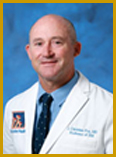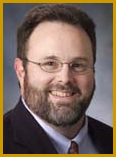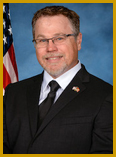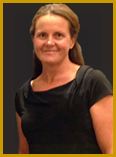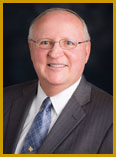
May 5, 2022
Our 1,000 Household Study:
Applying What We Learned…Now!
Session Overview
The impact of the COVID Pandemic is far from over. There is much more we can apply to medical emergencies…whether we have more COVID or other challenges. Join us and learn what we have learned through our study of more than 1,000 families:
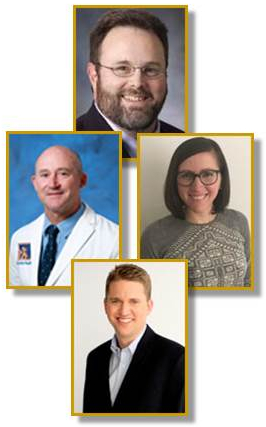
- Prevention of harm – primary and secondary harm
- Preparedness for surges, infections, and disasters
- Protection strategies and tactics
- Performance Improvement – apply what we learned
Hear from our experts on what can apply today and on our journey forward.. regardless of the medical emergency.
Go to https://www.medtacglobal.org/coronavirus-response/ for short videos covering the critical topics. Join as we focus on family Readiness, Response, Rescue, Recovery, and Resilience.
We offer these online webinars at no cost to our participants.

Webinar Video, and Downloads
Webinar Video:
Speaker Slide Set:
Click here to download the combined speakers’ slide set in PDF format – one (1) slide per page. ![]()
Click here to download the combined speakers’ slide set in PDF format – four (4) slides per page. ![]()
To view the file, click the desired link (please note: the files may take several minutes to download). To save to your hard drive, right click on the link and choose “Save Target As.” (In some browsers it might say “Save Link As.”)
Learning Objectives:
- Awareness: Participants will be made aware of the opportunities for improvement of dealing with COVID from a 1,000 household 24 month study.
- Accountability: Participants will understand who can be accountable for improving COVID safety in the home and in the community.
- Ability: Participants will learn about the know-how necessary for improving COVID safety in the home and in the community.
- Action: Participants may understand what line-of-sight actions may be taken to improve COVID safety in the home and in the community.
To request a Participation Document, please click here.
The CAREUniversity Team of TMIT Global, approved by the California Board of Registered Nursing, Provider Number 15996, will be issuing 1.5 contact hours for this webinar. TMIT Global is only providing nursing credit at this time.
Blog Transcript:
Our 1,000 Household Study: Applying What We Learned…Now!
Speakers and Reactors:
Dr. Charles Denham – Moderator
Dr. Greg Botz
Chief Bill Adcox
Dr. Christopher Peabody
Heather Foster
Jennifer Dingman
Dr. Charles Denham:
Good day, I’m Dr. Charles Denham, chairman of TMIT Global, and one of the co-founders of the MedTac Bystander Rescue Care Program. I’m honored to be both a speaker and your moderator today. We’re extremely grateful that you’re joining us to learn how to keep your family safe.
Jenny, thank you so much for representing the voice of the patient today. Could you please start us off?
Jennifer Dingman
Thank you, Dr. Denham. I’m thrilled to be here today to discuss the results of this study. I’m eagerly anticipating today’s webinar, and I’d like to extend my gratitude to everyone in attendance. Please share the website with all your friends, family, and colleagues. I’ll pass it back to you, Dr. Denham.
Charles Denham
Thank you, Jenny. So, Jenny, could you please share some final thoughts with our audience?
That was a great message from Jenny. I’ll now go back to our program. Please bear with us as we toggle back and forth today because I’m presenting remotely from my car. Jenny is a dedicated patient advocate who has been our voice of the patient throughout this entire 24-month process. She’s the recipient of the Peak Conrad Global Patient Safety Award, as are Dr. Greg Botz and Chief at Cox. We’ll have recorded sessions from Dr. Christopher Peabody, my son Charlie Denham II, and Heather Foster, who will be joining us both live and recorded. Additionally, Dr. Brittany Barto Owens sends a message encouraging us to continue promoting vaccinations for our children, adolescents, young adults, middle-aged individuals, and seniors, with contributions from David Beshk and Charlie Denham.
We have developed a checklist for families, which we’ll discuss later. Our purpose, mission, and values are crucial to us. Our main goal is to protect, and we measure our success by how well we safeguard and enhance the lives of families, patients, and caregivers. Our mission is to save money, save lives, and create value in the communities we serve. Our core values are encapsulated in the acronym I CARE: Integrity, Compassion, Accountability, Reliability, and Entrepreneurship. While we strive to live by these values every day, we may not always succeed, but we certainly make the effort. Our disclosure statement can be found on slide 10.
There are no conflicts of interest to disclose. No funds have been received from any pharmaceutical or device companies, directly, indirectly, or in any affiliated manner. This program is supported solely by family philanthropy. More information is available on our website. As this program will exceed 90 minutes, we’ll start with a brief section followed by two longer videos for those interested in a more in-depth exploration. Additional information will be added to our website over time. For those who want to see our Q2 2022 progress report, a video addressing how we’ve navigated the variant evolution from alpha to beta, delta, and omicron is available on our website.
And now we’re facing Omicron lineages and subvariants. This will give you insight into the work we’ve been doing. Interestingly, this heat map from April 5th, provided by Johns Hopkins, shows where cases have been reported. Unfortunately, as you can see from today’s map, which we retrieved from the web this morning, there’s now an uptick. As many of you are likely aware, testing isn’t being reported as extensively anymore because so many people are testing at home. As a result, we’re only receiving a small fraction of the positive tests. The best approach is to monitor the wastewater in our communities for the presence of the virus, as well as hospital admissions and deaths. We’ve posted a video addressing this on our main website, which you can watch for an update.
Dr. Boes, Chief Adcox, and I initiated an emerging threats community of practice before the COVID crisis, focusing on some 30-odd issues and emerging threats that should or are keeping leaders in our major medical centers up at night. Numerous organizations have helped shape this community, as you can see on this slide. Interestingly, readiness for epidemics, including preparedness for testing and volume surges, was one of the issues we identified long before the COVID crisis. This was a concern that was already on many people’s minds. For those of you joining us for the first time, we are fortunate to draw on a global research test bed of over 3,100 hospitals in 3,000 communities, with input from 500 subject matter experts.
You might wonder how we managed to assemble such a large group. It’s because we’ve done extensive work in patient safety over the past 37 years with organizations like the Leapfrog Group, the National Quality Forum, and several federal agencies. We’re grateful that most of the people we’ve worked with have stayed with us. We drew on this group to form our community of practice, starting with 60 subject matter experts. You can see some of them here, including Chief Adcox in the top row. Our contributor’s range in age from 8 to 80 years old. We’ve also incorporated insights from our Discovery Channel documentaries, Chasing Zero and Surfing the Healthcare Tsunami, as well as our upcoming documentaries, Three Minutes and Counting: Bystanders Care, and First Responders, Best Responders: Out of the Danger Zone, which Chief Adcox and I have been working on closely.
I won’t read through this slide, but we’ve been privileged to undertake this study, addressing numerous broadcasts, producing a campus safety magazine summit, publishing articles, and participating in various programs. One initiative involved recruiting students and alumni from leading universities to contribute to our program for high schoolers, college students, and young adults under 30. These contributors come from a variety of colleges, as shown on the slide.
We’ve been hosting webinars every first Thursday of the month, and we hope we won’t need to continue them much longer. Now, let’s discuss our study. The essential critical infrastructure workers identified by Homeland Security as crucial to our nation were updated in August 2020 to include educators. We found that saving the families of these essential workers, where we hypothesized the spread was occurring, would save the workers themselves, and this turned out to be true. We focused on what we call the five Rs: readiness, which involves preparation and regular review of a family response plan.
If someone gets infected or needs care, rescue is necessary for those with serious conditions, followed by recovery. Now, we know that long COVID is a critical issue, and resilience is essential. Chief Atcock, you might want to explain what target hardening is, but resilience is about ensuring that you’re the most resistant target to new threats. We’ve made this a cycle because we knew that we would be learning over time.
We undertook this study focusing on the five Rs using a modified Char scale, where 10 indicates very strong agreement and 1 indicates strong disagreement. Our questions were as follows:
My family is ready to take care of a loved one with Coronavirus in our home.
My family knows what actions to take if a loved one becomes infected with coronavirus. (As the evolution of quarantine and isolation occurred, we addressed it.)
Rescue: My family knows what to do when someone develops severe COVID symptoms. (These evolved as we saw with the CDC.)
Recovery: My family has a safety plan to return to work and play when the Coronavirus social restrictions are relaxed.
Resilience: My family has a plan to make them less vulnerable to epidemics in the future.
In the middle part of the slide, we included a free text entry format for participants to share what they found critical. This was very informative, along with interviews we conducted over the 24 months, which involved far more than the 1,000 workers we initially targeted. In fact, our goal was to have 1,000 workers, their families, and the general public, a number we easily exceeded.
We can’t share the data today because we’re publishing these articles, and as you probably know, journals won’t accept articles if the data is pre-released. But let me tell you what we learned. Chief Adcock is a co-author of the paper published in Campus Safety Magazine. We identified that family transmission chains were the problem, and the solution was family coronavirus safety plans, which must be flexible and use impact scenarios.
We employed the four A checklist framework: awareness, accountability, ability, and action, and used the five R scorecards of readiness, response, rescue, recovery, and resilience. We’ll have this article available for download. Our message was for educators, students, and law enforcement leaders. Back then, we created family impact scenarios, which we’re now updating for the final article, considering the current testing options. We developed a grid outlining actions for each of the Rs and scenarios.
As we enter our 25th and 26th month dealing with the coronavirus, we’ve seen the scenarios change, and our final paper will discuss the evolution. I had the wonderful opportunity to learn directly from Professor James Reason, who is often credited with the Swiss cheese model of defenses. In this model, our defenses are like holes in Swiss cheese, and we need many layers. We’ve animated his description. He informed us that it was actually a graduate student who first proposed this model, and he has been the one to promote it. He’s humble enough to credit the graduate student.
But social distancing is a layer that allows the virus to pass through. Masks, when added to distancing and disinfecting high-touch surfaces, provide another layer of protection. At first, we thought disinfecting was crucial, but its importance has diminished somewhat, although it remains essential. Ventilation became critical late in the pandemic due to aerosol spread. Testing, meanwhile, has significantly reduced risk. If you had to leave today, what did we learn from the thousand-family study? As Bill Adcock will discuss shortly, it’s similar to security and law enforcement practices. You must have layers of protection, as no single measure will solve the problem.
In one of our webinars, we addressed our stressed emergency safety net consisting of bystander rescue care, which now needs to be better equipped. EMS takes much longer, police officers may not respond to 911 calls due to being short-staffed, and fire services are also delayed. Our emergency departments are extremely stressed. So, what did we learn, what’s new, what do we need in our family plan, and how do we protect our families? These are critical elements covered in an entire webinar.
I’d like to address the state of our safety net. Bill, Dr. Botz, and I have used the metaphor of performing over a safety net. Unfortunately, big holes now exist in it due to COVID, and it doesn’t cover many emerging threats. Our public safety net is stretched with gaps. Bystander rescue care has become crucial. Families need to prepare for new threats and risks and anticipate delays.
Now, I’d like to hand it over to Bill Adcox, who I often refer to as a doctor because of his intellect and leadership in threat safety science. Bill, can you address the safety net?
William Adcox:
Thank you, Dr. Denim. It’s an honor to discuss the pandemic and the thousand-person study. You mentioned the safety net, comprised of various components. I’ve come to the conclusion that bystander care is perhaps the most crucial element we have control over that can protect our families. The safety net is stretched and has holes. Considering the pandemic’s impact on our country, preceded by social unrest, and the current economic and inflationary challenges, we find ourselves in a precarious situation.
In our global economy, population kinetics have shifted as more people work from home, leading to changes in criminal activities. Criminals are adapting, as seen in the significant increase in catalytic converter thefts across the US. Precious metal prices have surged due to pandemic-related mining disruptions, making these thefts more lucrative. As a result, gang members and violent criminals have shifted their focus, leading to more violent confrontations and deaths, including police officers being shot and killed.
So, traffic deaths are at an all-time high due to less law enforcement presence on the roads, and according to the FBI director who spoke recently, murders across the United States are at a 60-year high. Violent crime and traffic deaths are both increasing. Additionally, domestic violence is on the rise, as many victims can no longer find respite by going to the office and escaping their abusers. There are significant changes happening, and part of the problem is that people can’t access the treatment they need, including bystander care. Ambulances are delayed at emergency rooms that are overwhelmed, making them unavailable for other emergencies. With more people falling sick and many delaying medical cares, we’re seeing other types of illnesses and emergencies emerging. It’s a terrible situation.
We’re also facing supply chain issues. When trying to purchase new emergency vehicles, we find there are none available. Manufacturing is lagging, and there are global supply issues. We’ve been told that there are huge delays, sometimes six months or a year, to get replacement vehicles. The state and local governments, through what we call a BuyBoard, are even having trouble acquiring vehicles, as sellers prefer to sell to individuals at higher prices than to government entities. So, we’re in a state of disarray, and it has stretched the safety net and created holes in it.
I can’t stress enough the importance of bystander care. It encompasses a wide range of actions, including having a safety plan for your home, knowing what to do if someone gets sick or infected, how to separate and quarantine them, and how to transport them to the emergency room. It covers what information you should have on hand and what limitations you might face when seeking medical care for your loved one. We’ve covered aspects of bystander care in our webinars, which are available to everyone at no cost.
The safety net is in rough shape, and we’re asking everyone in our communities to come together and help each other.
Charles Denham:
Thank you, Bill. One of the most surprising things is that the leading cause of death among young people has shifted from motor vehicle accidents, which it has been for 60 years, to gunshot wounds. This reflects the uptick in crime and the importance of the safety net, as someone can bleed out in three to five minutes. That’s why bystander care is vital. Thanks, Bill, we’ll return to our slides now. We’re delighted to have Heather Foster with us, who will discuss what to do when we’re at home. She’s a great leader in this area.
For those joining late, I’m sharing these slides from a beach in Southern California, where I’ve had the chance to participate in a University of California, Irvine Wilderness Emergency Competition. It’s been awesome. Let’s talk about some of the programs we’ve had. One of our first webinars was “Coming Home Safely: Hot Zone, Warm Zone, Safe Zone.” We learned that the hot zone is at work, the warm zone is during transportation, and the safe zone is at home. What we learned is that aerosol spread is now the critical issue.
We initially focused on cleaning and washing hands, wearing gloves, etc., but now we know that vaccination, ventilation, and masking have a significant impact on preventing the spread of the virus. Home testing is not being reported as frequently, so it can’t serve as an early warning sign in communities. We need to consider other factors when balancing community immunity and infection rates. To protect our families, we should focus on protecting vulnerable members from aerosol spread. We need to continuously monitor community risk, as wastewater data, hospitalizations, and death statistics are now less reliable indicators.
In our second webinar, we discussed keeping our kids safe and moving from outside and inside threats that put us at risk to measures that reduce those risks for family safety. Dr. Britney Owens, who couldn’t be with us today, continues to emphasize the importance of vaccination and following basic behavioral principles. She also encourages parents to take their kids to the emergency department when necessary, without fearing the disease and to ensure that they receive other vaccinations.
We used a framework where a given threat multiplied by our vulnerabilities equals the threat to our family, the probability of harm. We focused on inside and outside threats and building resilience. As Bill mentioned, staffing shortages in law enforcement and healthcare have increased outside threats. Every family has a unique risk profile, so it’s crucial to evaluate your family’s specific needs. Protecting vulnerable members, such as seniors, immunocompromised individuals, and children, is a top priority. Continuously monitoring risk and knowing what to do if someone gets infected and needs care at home is essential.
Heather Foster helped us develop a care room checklist, setup checklist, supplies checklist, and home care checklist. We initially thought contact surfaces were more important than they are now. While proper cleaning is still necessary, aerosol spread has become the primary concern. Emphasizing ventilation and family masking is crucial, and being prepared for isolation and quarantine is essential, especially as CDC guidelines change and testing impacts those guidelines.
Charles Denham:
Heather, thank you for joining us. You did an excellent job helping us put together our program and checklists for caring for people at home. Now, 25 months into this program, could you share updates and lessons learned? How do we still need to be careful when taking care of someone at home?
Heather Foster:
Certainly. One of the key takeaways from this pandemic is that we can effectively care for patients at home if we follow the guidelines. Even laypeople can manage home care successfully. The push for vaccination is now stronger than ever, and with FDA approval for vaccines at various levels, including for children, we’re better equipped to handle the virus both at home and in inpatient settings.
Charles Denham:
Fantastic, thank you so much for all the work you did. You were a nurse infection preventionist when we were building this program and counseling families about their concerns. Would you agree that we still need to remain vigilant? We’re dealing with waning vaccination protection, COVID fatigue, and emerging variants. What’s your advice for other parents?
Heather Foster:
I think we absolutely need to stay vigilant. We still have masks, which have proven effective, and we still have vulnerable patients. Frankly, Chuck, I think we’ve seen that people in the community have voiced that they can continue to be vigilant. We’ve had quite a few people get sick, not just with COVID but other illnesses like the flu because people are reverting to their old habits. If we can incorporate the practices, we’ve learned from COVID, we can avoid these illnesses as well.
Charles Denham:
Thank you, we really appreciate your work and the great care provided by all the nurses. As we move on to emergency rescue skills, what did we learn? What’s new, and what do we need in our family plans? This is an important area, so I’ll skip the formal slide presentation and focus on the “five rights of emergency care” with Dr. Christopher Peabody, an emergency medicine doctor and director of the UCSF Acute Care Innovation Center. He worked with me to develop the five rights of emergency care, which include the right provider, right diagnosis, right treatment, right discharge, and continuity of care in the community.
It’s essential to go to the right provider for serious conditions and have medical records available for the right diagnosis. Right treatment and right discharge are crucial, and Dr. Peabody will discuss the importance of discharge precautions and knowing when to return for care. Continuity of care in the community is vital. Dr. Casey Clements from the Mayo Clinic spoke on this, and I was just discussing it with Dr. Chris Fox, who’s hosting a wilderness care competition in Southern California. Emergency care is more critical than ever, and we need to be prepared to protect ourselves when taking someone sick to the hospital and bringing them home.
Most people didn’t realize that Uber didn’t want to transport COVID-positive patients, nor did hospitals. What did we learn? Our safety net is stretched thin, and preparation is key. What’s new? During surges, emergency care was significantly impacted and delayed. What do we need in our family plan? Follow our program for COVID or any emergency with the five rights of emergency care, which Dr. Botz will discuss at the end of this program. How do we protect our families? Be ready for any emergency, including accidents or other non-COVID related incidents.
Dr. Botz covered a great program on what to do if a loved one is in the ICU. Fortunately, we can have more people in the hospital than before, but we’re still limited. Many are still wearing masks, which is crucial. Even though people aren’t getting as sick, we still have many in the ICU, on respirators, or on ECMO, artificial heart-lung machines that oxygenate the blood. You can see these in our video. What did we learn? Our critical care processes have improved dramatically. What’s new? Pruning patients in the hospital allows better oxygen exchange, and medications have had a significant impact. What do we need for our family plan? Be ready for new surges and know what to do if loved ones become very ill.
People continue to fall severely ill, end up in the ICU, and many are still dying. We are approaching the one million marks in COVID-19 related deaths, and we rank 60th or worse in the world in terms of our response to the pandemic. So, have we handled it well? Probably not. Despite representing only 4% of the world’s population, the U.S. has 25% of COVID-19 deaths.
How can we protect our families? It’s important to understand what happens in the ICU. I won’t go into all the details about the vaccines, but over the past 24 months, we have seen the emergence of the alpha, beta, delta, and omicron variants. The evolving nature of these variants may continue, and we now have omicron variants that are 25% more transmissible than the previous ones, which were already 50% more transmissible than the delta variant.
As shown in the heat map at the start of our presentation, Southern California remains a hotspot for the virus. We’ve also identified a “movable middle” – a group of people who have received one or two vaccine doses but are not up-to-date with their vaccinations. We know that vaccine efficacy wanes over time. To address vaccine hesitancy, we’re helping to distribute a series of videos targeted at teens and young adults. These videos are available in Spanish and can be accessed on our website.
What did we learn? Vaccines are safe and a crucial line of defense. However, vaccine protection wanes over time. Even vaccinated individuals can get infected, and those who are infected still need vaccines. What should our plan include? Schedule vaccinations. My wife is getting her booster today, and I received my second booster two weeks ago. Many people forget to get their boosters, so ensure that everyone in your family is up-to-date with their vaccinations.
Long-haul COVID-19 is a serious concern. I personally know six friends struggling with symptoms like fatigue, breathing difficulties, depression, anxiety, heart inflammation, and blood clots. Long COVID is real, and it’s a time bomb. Even those with mild infections can develop long-term symptoms. Avoiding COVID-19 is crucial to prevent long-haul symptoms.
To fight COVID-19 prevention fatigue, encourage your family to wear masks, avoid closed spaces, and stay safe. We discussed the 10 best practices for reopening and the four Ps: Prevention, Preparedness, Protection, and Performance Improvement. Chief Ed helped us understand the concept of “getting left of boom,” a military strategy that emphasizes proactive action against threats.
We have put together an essential worker toolbox to address critical issues, and today we will discuss special care for vulnerable populations. Immunocompromised individuals, seniors, and children are at higher risk. We don’t fully understand why some people are more vulnerable than others, but cancer and transplant patients are particularly susceptible. Wearing a mask is a patriotic and community service act, protecting those around you from COVID-19. Prevention measures, such as aerosol masks and ventilation, are effective.
Finally, customize your family plan based on your specific needs. If you have vulnerable family members, adjust your behavior accordingly. My family has three vulnerable members, so we avoid indoor dining and host outdoor gatherings. Adapt your approach depending on your situation.
How do we protect our families? We must fight COVID prevention fatigue. Variants are still present, and communities have let their guard down, creating a real challenge now. I recently had the wonderful opportunity to spend time with Dr. Robert Katzer. Dr. Katzer is one of the emergency medicine doctors who helped Charlie Dana, my son, and David Bash, by teaching our MedTac program here on the West coast. He’s the lead of the wilderness emergency medicine program that’s right behind me, where they’re getting ready to have a break. They identify top leaders, and Dr. Katzer helped us understand travel. David Bash and my son Charlie put together a checklist.
Now, Dr. Katzer advised us from an emergency medicine standpoint, as did Dr. Clements and Dr. Fox. But it was actually David Bash, an award-winning teacher, and these young students who helped develop a checklist for the family lifeguard back in 2015. This checklist is a way for us to protect ourselves during events. Over the last two years, it has evolved as we learned about rapid antigen testing and identifying vaccinated or at-risk individuals. What have we learned? Aerosol spread is much more important than contact surfaces. Instead of focusing on gloves and washing up, we should prioritize ventilating bathrooms, wearing masks indoors, and not sharing air.
What’s new? There’s a significant payoff to paying attention to the vaccination of guests, using rapid testing, and avoiding poorly ventilated indoor spaces. What should be included in our family plan? We need to build in aerosol precautions.
Dr. Katzer and I discussed travel precautions, including air travel, train travel, car travel, and bystander rescue care. Chief Adcox, Dr. Botz, and I have been working diligently on eight target areas. Bystander rescue care, or Good Samaritan care, can be safe even when people have COVID. Emergency response services are stretched more than ever, but with proper protective equipment, we can take care of people safely.
Testing to navigate care is another topic we covered. I highly recommend watching the whole program, where we reviewed antigen tests and PCR tests, explaining their differences and uses. Consumers often have confusion regarding testing. Home antigen tests tell us if we’re contagious, while PCR tests can be positive after we’re no longer contagious. In our family plans, we should ensure everyone understands the basics of testing.
To protect our families, have home rapid antigen tests ready for the next surge. Pay attention to the CDC for updates on the efficacy of tests with new variants. Use these tests to protect our families.
Today, Chief Adcox and Heather Foster are with us. We will show video clips of Dr. Botz reviewing the five Rs and Dr. Peabody addressing the five rights of emergency care. Unfortunately, I have low battery life on my computer, so I’ll have Kyle Kemp play those videos. But I want to remind everyone on our teams: fight the good fight, finish the race, and keep the faith. Everyone is a patient, and everyone can be a caregiver. I’ll stop sharing my screen for a moment and check in with Chief Adcox. Are you still with us? If so, do you have any concluding comments before we move on to the videos? Afterward, we’ll play Jenny Dingman’s close, followed by the extended session for those interested. Go ahead, Chief.
William Adcox
Thank you. My closing thoughts are to encourage everyone to avail themselves of all the information provided. Go through it, pick out what you need, develop your safety plans, and get your family trained as bystander rescue responders. Help one another in the community, keep your eyes open, and we’ll get through this. We’re in one of the most trying times in our lifetime, so thank you.
Charles Denham:
Chief, thank you for being such a terrific pathfinder in threat safety science and working on the final papers for our thousand-family hospital study. It looks like it will be a series of papers or even a book, as we’ve had a lot of work that I think will contribute to future epidemics and pandemics. We’ve learned how our public health systems have failed and how we’ve failed to take care of our families. There’s a lot we can do. Heather, any final comments before we move to Jenny Dingman and then play the sessions on the five rights of emergency care and the five Rs?
Heather Foster:
I’m so grateful, Chuck, that we had this platform to help others. I encourage everyone to continue being vigilant in the fight against COVID.
Charles Denham:
Heather, thank you on behalf of us for all the frontline caregivers who have done a great job. We know that workplace violence is off the charts, and many frustrated people take it out on their caregivers. We’re so blessed to have you hanging in there for us. Thank you so much. I’d like Kyle Kemp to play Jennifer Dingman’s closing thoughts now. Then we’ll move to Dr. Peabody’s five rights of emergency care, followed by Dr. Botz addressing the five Rs of the safety plan for those unfamiliar with them. Thank you very much. I know my battery life will die, but we did this as a prevention to continue serving remotely. Thank you so much.
Jenny, could you please share with us your final thoughts as the voice of the patient?
Jennifer Dingman:
Thank you, Dr. Denham. This study has been incredibly enlightening for me, and the results will help all of us with our families and the people we love as we navigate the new normal. We may not know exactly what the new normal will look like, but thanks to groups like this, we now have a roadmap. I want to express my gratitude to everyone here today and to those listening in. Please share this information widely with your colleagues, and I look forward to future webinars. God bless everyone. Thank you.
Charles Denham:
Thank you, Jenny.
Charles Denham:
Care University serves patients, family caregivers, and professional caregivers by offering education focused on care issues. Our content is developed with expertise from a network of over 500 subject matter experts from leading medical centers. We measure our success by how well we protect and enrich the lives of the families we serve, both those of patients and professional caregivers, because everyone is a patient, and everyone can be a caregiver. At Care University, our mission is to address what we call high-impact care hazards – those conditions that are frequent, severe, preventable, and measurable. Our solution is to help patients, families, and professional caregivers adopt new behaviors that become life-saving habits, which we call lifeline behaviors. Few families have escaped the fear and stress of a healthcare emergency. Our emergency department visit was a blur. It’s so frightening to have someone you love in trouble. Normally, I can handle stressful events, but I was just paralyzed. Without a guide and a checklist to follow, we would’ve been lost.
Charles Denham:
Whether you or a loved one are receiving acute care for an emergency, chronic care over time, or preventive care to stay free of disease, there are many actions you can take to make your journey safer and better. This is especially true during an emergency when stress can blind even the most competent among us. This module addresses a framework we use to help you receive the best emergency care possible. We call it the Five Rights of Emergency Care. We’ve created a simple checklist you can use with paper and pen, download for use on a computer, or even access as an app on your smartphone. Your caregiver may even provide it during an office or emergency room visit. Let’s review what you’ll learn about the Five Rights of Emergency Care.
The framework consists of five main sets of “right” lifeline behaviors, or rights, that you can follow to receive the best emergency care for yourself or your loved one:
The Right Provider: In an emergency situation in your area, it is important to know where the emergency care providers are located. If you have time to make a choice, it is crucial to choose the best provider for your needs. While most people might consider going to the nearest hospital, that may not always be the best option. Emergency services range from urgent care centers, which are like 24-hour doctor’s offices that provide some but not all emergency services, to specialized emergency departments at hospitals that focus on trauma, stroke, cancer, and pediatric emergencies affecting children. One critical factor to consider is that your previous medical records are essential for your care. Without access to them, tests may need to be repeated, causing delays in your treatment. Therefore, it might be wise to go to the emergency department at a hospital where you’ve previously been treated and where your medical records are accessible. This could save you both time and money, and potentially even save your life. In situations where emergencies such as car accidents, falls, strokes, or heart attacks occur without warning, it’s important to have your ICE (In Case of Emergency) contact information in your wallet and on your smartphone. First responders are trained to check these locations first. You should have more than one contact listed, as you may be with your chosen contact during an emergency.
The Right Diagnosis: If you have time to gather them, bring your medical records with you – a full set if you have them. Anyone with a serious illness should have their medical records readily accessible. Additionally, bring all your medications, including over-the-counter drugs and any vitamins or dietary supplements you regularly use. If you have a medication list, bring that as well. In many emergency situations, your blood will be drawn for testing, and prior records are essential for comparison. Make sure to inquire about the purpose of such tests and how the results will be used. Finally, you may undergo imaging tests such as x-rays or ultrasound studies. Prior imaging studies or reports can be helpful in these situations. More advanced imaging tests, like CAT scans or MRIs, might also be conducted. Ensure you know why these tests are being done and ask how you can obtain the results on compact discs for future reference. You can request this from the imaging Tacnologist after the tests are done, which can save time. If you or your loved one are too sick to ask, any family member can make the request. Always remember to be courteous, as the staff are your greatest allies during an emergency.
The Right Treatment: Shared decision-making is a process that involves patients and their families in their care, a practice that the best caregivers are adopting. This means taking into account your preferences and needs when making recommendations for your treatment. Don’t hesitate to ask questions and understand the treatment plan the emergency department team is suggesting. This plan may address immediate concerns, as well as recommendations for long-term care. For example, you might come in with a cut that requires stitches or a more complex procedure.
During your emergency department visit, it’s possible that they may discover you have high blood pressure that requires your primary care doctor’s attention. Additionally, after the initial symptoms are treated, there may be further steps necessary. In the majority of ED visits, a prescription for medication will be given, and over-the-counter medicines may also be recommended. You need to understand what these medicines are, why they’re recommended, and when to start and stop taking them. Approximately two-thirds of hospital admissions come through the emergency department, so you or your loved one might be recommended for a hospital stay. Ask why the admission is necessary, who will be part of the caregiving team, and what’s crucial about the care you’ll receive. A significant portion of medical errors occur during handoffs, so you and your family should be an integral part of the communication chain. Sometimes, patients sit in hospital beds awaiting care, and a knowledgeable and courteous family member can help keep things moving.
Right Discharge: This is a crucial stage of your visit to the emergency department. Once your symptoms have been addressed and you think you’re out of danger and ready to go home, you must follow the discharge plan. Return precautions are essential. You need to know about when you should return to the emergency department. Understand your treated medical problem, the diagnosis, the tests performed, and the treatment you received, as well as your ongoing treatment plan. Pay attention to vital return precautions, such as a rise in temperature, no improvement, or a return of symptoms, and any other reason you should return to the ED. Your care team will provide you with a list. If there were any changes to your medication, ensure you have an updated medication list. Understand your care plan for what to do post-discharge, including wound care, diet, and any other special treatment needs. Be sure to get all the paperwork, imaging reports, and test results to save frustration and cost later on. If you can get imaging studies on CD, do so; they are expensive, costly to duplicate, and essential in the future.
Right Follow-up: Your follow-up starts with your regular or primary caregivers, whom you should update regarding your ED visit. Don’t assume they will receive records from the hospital or ED without your assistance. Bringing the records to your follow-up visit ensures they have them. Update your home records with the ED records and any updates from your regular doctors. Keep both hard copies and digital ones, if possible. ED visits often lead to seeing new doctors, specialists, or even getting second opinions. Patients and families play a crucial role in ensuring all doctors have access to tests and ED records for the best follow-up care possible.
Now that you’ve been introduced to the five rights of emergency care framework, you can see how adopting new lifeline behaviors can significantly impact your care. Other modules can assist you further, especially the Five Rights to Your Medical Records, How to See a Specialist, and How to Get a Second Opinion. There’s so much you can achieve by being engaged and collaborating with your professional caregivers. We wish you the best on your journey.
Thank you for helping to expand on the concept of the Five Rights of Emergency Care, especially during this intense time with many COVID-related issues. As patient safety leaders, what are you seeing that we need to be aware of regarding delayed diagnosis, misdiagnosis, and other issues that have arisen in this new context?
Christopher Peabody:
Well, there’s a number of things, Chuck. I think it all stems from communication, especially involving the caregivers who accompany patients to the emergency department. What we’re seeing is that patients aren’t allowed to have their caregiver present. Often, the triage nurse gathers information as best as they can, and then the patient’s caregiver is dismissed, and the patient goes to the emergency department unaccompanied. So, a lot of times, this critical information is transferred from the caregiver to the care team over the phone. This can be delayed, and sometimes we don’t have the right medication list. So, medication reconciliation is a big deal.
At the moment, we’re seeing patients who are reluctant to come to the emergency department, leading to delays in care. We’ve also noticed the effects of telemedicine in primary care. Particularly, we’ve seen a couple of cases in prenatal care where blood pressures weren’t taken in the third trimester because the visits were switched to video visits, and we didn’t have accurate blood pressures on very critical patients. As a result, we’ve seen some critical cases fall through the cracks due to issues related to our national emergency.
Charles Denham:
How about adverse drug events? Have you noticed a change in the kinds of adverse drug events that you would typically have seen previously compared to what you see today?
Christopher Peabody:
I always prefer having someone at the bedside with the patient who knows them better than I do. What I’m finding is that the caregiver who is usually with the patient day in and day out, whether it be their spouse or a caregiver who works with our elderly patients daily, is no longer allowed at the bedside. So yes, we are seeing a lot of issues, especially in relation to medication reconciliation. Most of these cases are near misses, but as we know, near misses in patient safety are the siren before a major event. I personally haven’t seen a major event in relation to medications yet, but I’ve seen a lot of near misses.
Charles Denham:
How about adherence and compliance to the use of medicines now that there’s a protracted time period between seeing primary care or specialists? Do you see people stopping their meds, like not taking their anticoagulants, blood pressure medicines, or other critical medicines that keep them healthy?
Christopher Peabody:
I have seen several cases where patients have waited for refills because they have to either go in for a visit or have a telemedicine appointment to do so. I’ve had a few patients who came into the emergency department at the end of their medication supply and hadn’t been able to take them for a few days to get prescriptions. I’m sure our primary care colleagues are seeing a lot of this right now. I’ve also seen patients, especially those on blood pressure medications, not having their medications adjusted as frequently as they might have in pre-Covid times because we haven’t been able to get accurate blood pressures in this telemedicine-dominated world that we’re living in.
Charles Denham:
Do you think there’s a place for virtual medication reconciliation, so that people don’t have to go in, but we can loop back and just reconcile the meds, making sure everything’s as planned and everyone’s in agreement?
Christopher Peabody:
Absolutely, and I am a huge proponent of telemedicine. I think the access it provides for patients is crucial during these times and moving forward. I believe it’s here to stay. However, there are certain aspects that need to be ironed out. One issue I’ve encountered is accurate blood pressures. How do we address that in the era of telemedicine? Is a home blood pressure cuff enough? Do patients with limited access to healthcare have access to those devices? I think virtual medication reconciliation is likely in the pipeline and probably being used in certain systems. However, I worry about the digital divide for patients with lower access to healthcare. Nonetheless, I think we’re seeing this being accelerated due to Covid.
Charles Denham:
So, do you recommend every family have a pulse oximeter? We’ve seen that many people are starting to recommend it, in addition to recognizing the CDC’s emergency signs, which now include oxygen saturation. Would you advise families who can afford it to get a pulse oximeter?
Christopher Peabody:
Especially for families with a Covid-positive member, having a pulse oximeter is a good idea. Should every family have one? Our family does, but I’m also an emergency physician who likes to have that data available. I don’t think it needs to be a standard item for every family unless there’s a specific diagnosis involved, Covid being one of them. For these cases, having a pulse oximeter is vital for monitoring disease progression at home.
Charles Denham:
What about having medical records on a thumb drive and bringing it in? Can you access a thumb drive in the emergency department, or are there security issues that make it difficult?
Christopher Peabody:
Chuck, I think having medical records and medications on your mobile device, and being able to show that directly to the clinician and care team for input into their system, is perfectly fine and probably easier for patients, as they usually have their phones with them. I’ve found this very helpful. To date, I haven’t had a patient come in with a thumb drive that I could access. However, accessing records on a phone happens often. Whether it’s a patient portal from your healthcare system that you can show to paramedics or emergency providers when you get to the ER, that would be great. If you don’t have access to one of those portals with up-to-date information, keeping a list of your medical diagnoses and medications, including the dosages, is critical for the care team in the emergency department.
Charles Denham:
So, we can put files on our phones and learn how to open them up. Do you recommend having family members email records directly to the emergency department? Is that allowable under HIPAA these days if we can’t get the information to you directly?
Christopher Peabody:
I think most emergency care information is exchanged in a face-to-face manner. So, showing a document on your phone is perfectly acceptable. I haven’t had a patient email me, and I would be concerned about the security of that transfer. In terms of HIPAA, there are ways to send secure emails, especially within certain healthcare systems, to your providers. However, the emergency department is typically a fast-paced environment, so I’d much rather have you show me the information on your screen.
Charles Denham:
Coming back to medications and adverse drug events, we know the top three are anticoagulation, opioids, and diabetic agents. Are you seeing things later and seeing compounding problems with them? They account for over 60% of our adverse drug events.
Christopher Peabody:
It’s interesting. I work in the Bay Area in San Francisco, and we’ve been seeing a lot more fentanyl overdoses, similar to levels seen back east before Covid. We’ve also been seeing more anxiety and depression, likely due to lockdowns, social distancing, and the inability to interact with others. As a result, we’ve seen many people self-medicating and experiencing exacerbations of depression. We’ve seen more suicide attempts than in the past, and more fentanyl overdoses lately. I’m not sure if it’s directly related to Covid, but it may be tied to the availability of these medications in our region.
Charles Denham:
How about anticoagulation, both related and unrelated to Covid? Are you seeing any changes?
Christopher Peabody:
The main issue I’ve noticed regarding anticoagulation is access to prescriptions, especially for those taking anticoagulants for valve replacement. Most of these patients are still on warfarin or Coumadin and haven’t been able to access Coumadin clinics as much as before. As a result, we’ve been seeing some super therapeutic warfarin levels in the emergency department. We’ve seen similar amounts of head injuries and other incidents related to the novel anticoagulation agents. The errors associated with anticoagulation are still present as they were before Covid, so we haven’t seen much change.
Charles Denham:
What about diabetic agents in diabetics?
Christopher Peabody:
We’ve seen a lot of changes in diabetic management. I can’t imagine how challenging it must be for primary care physicians to adapt their practice. There might be changes in diabetes management, especially with the potential for better access to health coaching through telemedicine. However, access to patient records and glucose checks in the clinic may be limited. In the emergency department, I haven’t noticed any significant change. We saw diabetes out of control before Covid, and we continue to see it after Covid. We still see many diabetic-related complications, perhaps some of them presenting a little later than they would have otherwise, but I haven’t noticed any real significant changes in the medication front.
Charles Denham:
How about with children? Are you seeing delayed diagnosis of appendicitis, asthma, and other conditions in kids? Are you noticing any changes in how families are handling their children’s health?
Christopher Peabody:
It’s interesting. As we enter flu season, I’ve seen a significant decrease in the number of kids coming to the emergency department, likely due to social distancing. Children aren’t getting as many upper respiratory infections that might trigger asthma exacerbations. Perhaps early in the pandemic, we saw some asthma exacerbations that waited a bit too long, but now that the community is opening back up and people are trusting the procedures in the emergency department, I haven’t seen a significant amount of delayed diagnosis in children. However, I have noticed that the volume of children coming to the emergency department is still decreased.
Charles Denham:
Dr. Peabody, you’ve done an excellent job helping me articulate the five rights of emergency care. Can you apply the five rights as they pertain to children and teens?
Christopher Peabody:
Absolutely. Knowing the five rights when you need to come to the emergency department is as crucial during the Covid-19 era as it was beforehand. The first thing to know is that if you need to come to the emergency department, please do. We want to see you and your loved ones in the emergency department if there is a genuine emergency.
Charles Denham:
What about the right provider?
Christopher Peabody:
Chuck, having the right provider for emergency care is essential. You want to go to a place that has your records and knows your general history and is in contact with your primary care system. That was true before the pandemic and is still true during Covid-19. If it’s not possible to go to an emergency department that knows you, go to the closest place you can if it’s a true emergency. If it’s an emergency where you need to call an ambulance, be aware that the ambulance will make those decisions for you and will usually choose the right place for the critical moment you’re facing.
Charles Denham:
So, what about the right diagnosis as it applies to children and teens?
Christopher Peabody:
Especially for teens and young adults, Chuck, they may have never been to the emergency department by themselves. During Covid-19, it might be their first time going alone. It’s essential to have their medical information, medications, recent lab results, or imaging readily available for the physician and care team seeing them in the emergency department. This is particularly relevant for teens who may be unfamiliar with what an emergency visit entails.
Charles Denham:
As we talk about the right diagnosis, considering children and teens and possibly only one accompanying parent, communication is crucial, right? Especially when thinking about the right treatment.
Christopher Peabody:
Absolutely. Communication is key in closing the loop with your care team, ensuring everyone knows what’s happening. With Covid-19, parents may not be able to be with their loved ones. Whether it’s a teen coming alone or only one parent being allowed to accompany a child, we use any means necessary to close the loop with parents, including electronic media like FaceTime or text messaging.
Charles Denham:
You’ve highlighted the importance of the right discharge and return precautions in the five rights. What’s essential when considering younger kids, young adults, and teens?
Christopher Peabody:
Emergency physicians and their care teams only see you at one point in time, and sometimes the right diagnosis may not be immediately apparent. Knowing when to return to the emergency department if things change is crucial. Getting the correct discharge instructions and closing the loop with your care team before going home is one of the most vital aspects of an emergency department visit. Of the five rights, Chuck, I believe the right discharge is where I would focus the majority of my attention.
Charles Denham:
Finally, regarding the right follow-up, how can we ensure continuity of care with the pediatrician and proper information flow? I would expect this to be even more challenging during Covid.
Christopher Peabody:
Absolutely. As primary care visits have largely moved online, you want to ensure that your primary care provider has access to the information gathered during the emergency department visit. Knowing the correct follow-up steps and asking the emergency physician and care team during discharge about any information that may not be directly transferred to the primary care team is essential. If there’s a gap in information transfer, come up with a plan to get that information back to your primary care provider.
Charles Denham:
Fantastic, Toff. You’re always so helpful as we discuss emergency medicine and patient safety. This has been really helpful.
Christopher Peabody:
Thank you, Chuck. If there are ever any other questions, I’m always happy to come back on.
Charles Denham:
Dr. Botz, we began with our survey and now have over 1000 family responses addressing the five Rs. We’re now 24 months into this pandemic. As you advise families of critical essential workers and the general public, let’s cover the five Rs. So, the first R is readiness. After 24 months, how should a family approach readiness?
Dr. Botz:
Families should approach readiness as we did from the very beginning – have a plan. Consider your risks, especially if you have high-risk family members with immunocompromised or chronic medical problems. Use that information to formulate your plan and stay ready. Continuously assess the risks in your community and the activities you’re engaging in, particularly as things open up and we interact with larger groups of people. Stay vigilant in maintaining your and your family’s safety.
Charles Denham:
The second R is response. We now know much more about what to do if a family member tests positive. Many of us are frequently notified that our family members or school children have been in contact with someone confirmed to have the virus. Is there anything new to consider in responding if a family member either gets sick or has contact with someone who has the virus?
Dr. Botz:
In response, we need to think about deploying our family safety plan if someone becomes infected. The strategies remain the same as we’ve discussed all along – reducing risks to the infected person and those around them. Vaccination as part of the readiness plan has helped mitigate some concerns about severe illness from a Covid infection. However, the rest of the strategies in our family plan are still important and should be practiced.
Charles Denham:
The third R is rescue. We know much more about what to do if a family member is sick and needs to go to the emergency department. You, Dr. Peabody from UCSF, and Dr. Chris Fox from UCI, along with his colleagues, have helped us understand the factors important in rescuing someone who might be getting sick. We’ve encountered quite a few who’ve gotten sick and needed help getting to the hospital, or even had long Covid and required hospitalization. Any tips, considering we’re 24 months into learning about this virus?
Dr. Botz:
The concept of rescue is vital as we need a plan for transitioning from home care to seeking healthcare in a hospital or clinic for someone with coronavirus. Over the last two years, the healthcare system has learned to work in a PPE-driven environment much better than initially. Supplies are better, and people are more accustomed to using those strategies. It’s become more integrated into how we practice. However, it still can be challenging due to the safety measures in place. Access to emergency departments might be limited because of those strategies. People still visit emergency rooms for other routine care, injuries, and illnesses. But now, we also have people who need rescue due to unmanageable illness at home and require a higher level of care. While the challenge remains, it may not be as intense as before, but we need to consider it in our planning.
Charles Denham:
Our fourth R is recovery. Many of us know friends, family members, and colleagues suffering from long covid. I liken it to a time bomb, which can go off after someone has been sick. I have dear friends struggling to regain any semblance of normal life. Paradoxically, as you and I have discussed, when they try to exert themselves, it sets them back. It’s like taking two steps forward and one step back. What advice can you give about long covid? I caution people that while they may be tired of covid, long covid is something they definitely don’t want to experience.
Dr. Botz:
Absolutely. When we discuss recovery, we’re looking not only at people who may have a standard recovery from a viral illness but also those with long covid. These individuals have prolonged symptoms affecting many of their organs after recovering from the infection. There can be cognitive issues, like brain fog, which hinder the ability to return to work due to problems with multitasking and memory. Respiratory problems such as a lingering cough, difficulty breathing, or sputum production can also affect daily activities. Some may experience cardiac abnormalities like tachycardia, while others may have neuromuscular issues impacting balance and walking. We’ve seen these problems before in other illnesses but not so concentrated in a postviral syndrome like long covid. The challenge is that the healthcare system is learning about and managing long covid as it’s happening. Many people are suffering, and we’re still searching for answers, as we don’t yet have enough data to determine the most effective interventions.
Charles Denham:
Thank you. The fifth R is resilience, which I view as living in a way that reduces the potential risk of threats, akin to the military or law enforcement concept of target hardening. In my family, we consider activities over the next month, evaluate the ventilation of venues, choose outdoor options, and reduce our vulnerability to external threats. We also ensure that everyone is up-to-date on vaccines. Can you speak to this idea of resilience or target hardening to guard against external and internal vulnerabilities?
Dr. Botz:
Absolutely. Resilience is a crucial aspect of our ongoing response to the Covid pandemic and other illnesses or chronic medical problems. It involves critically assessing your activities to understand the risks they pose and your vulnerabilities at a particular time. Another dimension of resilience is how well you respond and manage if something happens, so you don’t fall apart. It’s about following your plan and behaving in a way that reduces the impact of an event and keeps you from unraveling.
Charles Denham:
That concludes today’s webinar. Thank you for attending.

